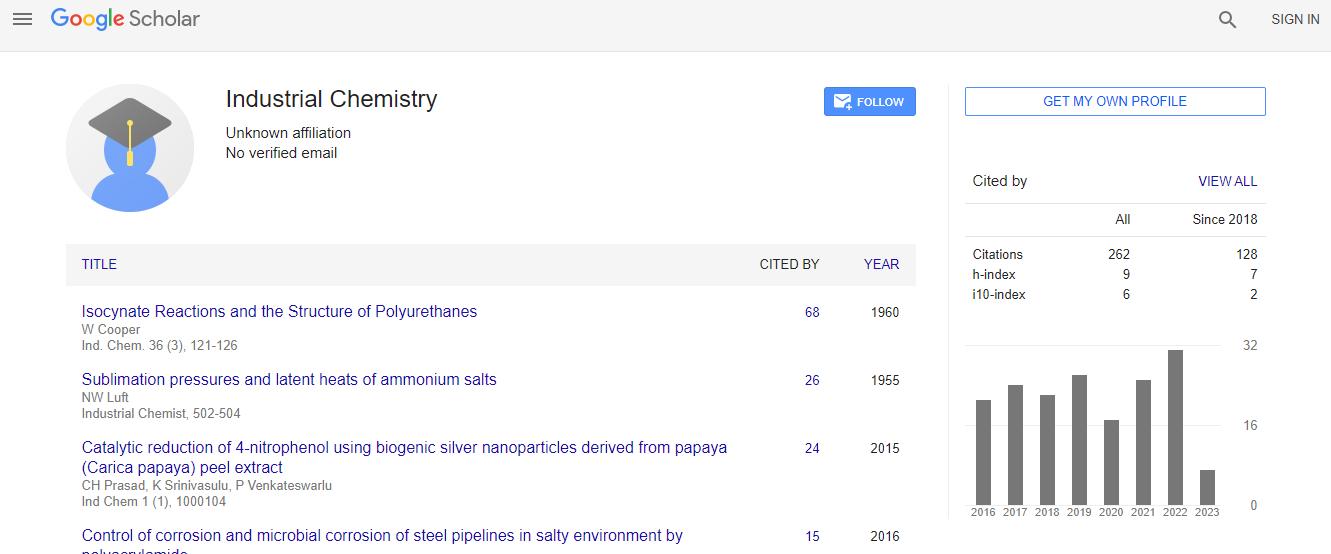Our Group organises 3000+ Global Conferenceseries Events every year across USA, Europe & Asia with support from 1000 more scientific Societies and Publishes 700+ Open Access Journals which contains over 50000 eminent personalities, reputed scientists as editorial board members.
Open Access Journals gaining more Readers and Citations
700 Journals and 15,000,000 Readers Each Journal is getting 25,000+ Readers
Google Scholar citation report
Citations : 262
Industrial Chemistry received 262 citations as per Google Scholar report
Indexed In
- Index Copernicus
- Google Scholar
- RefSeek
- Directory of Research Journal Indexing (DRJI)
- Hamdard University
- EBSCO A-Z
- OCLC- WorldCat
- Scholarsteer
- Geneva Foundation for Medical Education and Research
- Euro Pub
Useful Links
Recommended Journals
Related Subjects
Share This Page
Aggregation and photophysical properties of rhenium(I) supramolecules
International Conference on Industrial Chemistry
Pounraj Thanasekaran
Academia Sinica, Taiwan
Posters & Accepted Abstracts: Ind Chem
Abstract
A burst of research activity is witnessed in the area of aggregation-induced emission enhancement (AIE(E)) of luminescent materials because of their potential applications in organic light-emitting diode (OLED), bioimaging, biosensors for proteins, detection of insulin fibrillation, and recognition of fingerprints. Number of organic chromophores exhibited the behavior of AIE(E) properties, but only few of metal-free luminogens showed AIPE (aggregation-induced phosphorescence effect) active as a result of aggregation. Different from conventional fluorescent compounds, which are singlet-state emitters, heavy-metal phosphorescent complexes are triplet emitters. The strong metal-induced spin├ó┬?┬?orbit coupling leads to efficient mixing of singlet├ó┬?┬?triplet states, which eliminates the spin-forbidden nature of the radiative relaxation of the triplet state, thus enabling the enhancement of phosphorescence emission at room temperature. If these metal complexes carry amphiphilic units such as long alkyl chains, they can undergo aggregation in aqueous solution to form micelles and vesicles leading to enormous enhancement in luminescence with potential applications. We realized this interesting aggregation-induced emission enhancement phenomenon for the first time in the Re(I)├ó┬?┬?tricarbonyl complexes in the past decade soon after the discovery of AIE phenomenon. Herein, the novel behavior of rhenium(I) supramolecules comprising long alkyl chains to exhibit AIPE and AIEE properties, and their efficacy as sensors will be explored.Biography
Email: ptsekaran@gmail.com

 Spanish
Spanish  Chinese
Chinese  Russian
Russian  German
German  French
French  Japanese
Japanese  Portuguese
Portuguese  Hindi
Hindi 